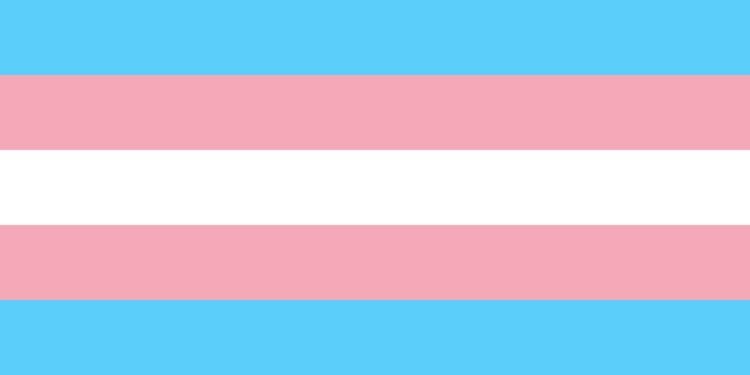 | ||
Attraction to transgender people is romantic or sexual attraction toward transgender people. Attraction to transgender people can be toward trans men, trans women, non-binary people, or a combination of these. This attraction can be a person's occasional, preferred, primary, or exclusive interest.
Contents
Like transgender people, individuals attracted to transgender people may identify as heterosexual, homosexual, bisexual, pansexual, or with none of these categories; they may identify as transgender or cisgender.
Terminology
There are a variety of terms, inside both the transgender and academic communities, for people who are attracted to transgender people. These terms include admirer, transfan, trans* catcher, trans* erotic, transsensual, tranny chaser, tranny hawk, though the final two may be considered offensive as they contain a slur.
The term tranny chaser was originally (and still predominantly) used to describe men sexually interested in visibly trans women, but it is now used by some trans men as well. Transgender people often use the term in a pejorative sense, because they consider chasers to value them for their trans status alone, rather than being attracted to them as a person. However, some claim this term in an affirming manner. The term tranny (or trannie) is itself considered a slur in many circles.
Less pejorative terms such as transamorous and transsensual have also emerged, but they have not seen much usage.
Academic terms
Sexologists have created numerous terms for preferential attraction to transgender people. John Money and Malgorzata Lamacz proposed the term gynemimetophilia to refer to a sexual preference for male-assigned people who look like, act like, or are women, including crossdressed men and trans women. They also proposed the term andromimetophilia to describe a sexual attraction to female-assigned people who look like, act like, or are men.
Ray Blanchard and Peter Collins proposed the term gynandromorphophilia, while Martin S. Weinberg and Colin J. Williams proposed the term men sexually interested in transwomen (MSTW) to describe the phenomenon among men.
Social aspects
In Diary of a Drag Queen, Daniel Harris describes four types of men interested in him while he was cross-dressed: heterosexual men who wanted the presumed superior oral services of another male; homosexuals who were only interested in his genitals; other cross dressers; and men who were intrigued by the mixture of masculinity and femininity he represented. Relatively little has been written about the sexual preference for feminized men. When describing what makes them feel sexually attracted, different people refer to different aspects. One aspect of the appeal has been reported to be their exoticism. Also, "they are often both hyperfeminine in appearance and sexual aggressive". There is a tendency for gynandromorphophilic men to describe being attracted to individual people who are transgender rather than to transgender people overall. Other tendencies are reported description of being attracted to what transgender women represent (a challenge to the traditional male/female dichotomy) and the explicit focus on the transgender body and appearance: "I like women with dicks. I like tits and I like dicks....Something erotic about getting fucked by someone who is a woman."
According to Helen Boyd, "Tranny chasers are the big bugaboo in the crossdressing community, because their very existence suggests that crossdressers are not all as straight as they claim to be. Chasers are willing to give crossdressed men the kind of attention they desire, and that attention (a drink, a compliment) validates the crossdresser's experience, and completes the fantasy of feeling like a woman." According to Jeffrey Escoffier of the Centre for Gay and Lesbian Studies of CUNY, sexual interest in male-to-female transsexuals first emerged in 1953, associated with the then famous transition of Christine Jorgensen. It was after expressing transsexualism via surgery became more feasible over the 1960s that sexual orientation came to be re-conceptualized as distinct from gender identity and cross-dressing. In survey of men who engage in sex with male-to-female transsexuals, 73% to 92% identified their sexual identity as straight or bisexual.
A study employing the penile plethysmograph demonstrated that the arousal patterns, genital and subjective, of men who self-report attraction to trans women are similar to those of straight men, and different from those of gay men. The study showed that those men, also known in literature as gynandromorphophiliacs, are strongly aroused to female stimuli but weakly if at all to male stimuli. Gynandromorphophiles differ from both straight and gay men, however, in displaying strong attraction to shemale stimuli as well, which provoked as much arousal to them as the female stimuli. The study also found that autogynephilia is common among gynandromorphophiliacs, with 42% of them scoring above 1 point on a questionnaire measuring autogynephilic arousal, compared to 12% of straight men and 0% of gay men. In the sample, 41.7% of gynandromorphophiliacs identified as bisexual, with the remainder identifying as straight. Bisexual gyandromorphophiliacs did not display more arousal to male stimuli than their heterosexual counterparts, however, they could be distinguished by their significantly higher level of self-reported autogynephilic arousal.
Erotic materials created for people attracted to trans men have become more visible in recent years, largely due to pornographic actor Buck Angel. Jamison Green writes that some cisgender gay men often enjoy sexual relations with trans men. Green writes, "Plenty of penis-less transmen [...] engage in sex with penis-equipped gay men [...] and these non-trans partners are often surprised to find that a penis is not what defines a man, that the lack of a penis does not mean a lack of masculinity, manliness, or male sexuality."
Academic views
Some academics characterize attraction to transgender people as a medical diagnosis to be managed or a type of paraphilia. Others state that stigma against attractions to transgender people can erase transgender identities and deny transgender sexualities, and argue that such attractions should be destigmatized.
